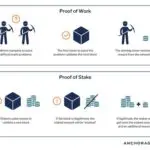The Multilateral Agreement on Investment (MAI) emerged as a discreetly negotiated draft agreement among members of the Organisation for Economic Co-operation and Development (OECD) from 1995 to 1998. This initiative aimed to forge a new framework of global investment laws, intending to endow corporations with unconditional rights for expansive financial operations worldwide, irrespective of national regulations and the rights of citizens. A pivotal aspect of the draft granted corporations the authority to take legal action against governments if national legislation related to health, labor, or the environment posed a threat to their interests.

The revelation of the MAI draft to the public in 1997 triggered widespread criticism, particularly from civil society groups and developing countries. The primary concern centered around the potential ramifications of the agreement, which could impede the ability to regulate foreign investors effectively. As opposition grew, an intense global campaign spearheaded by the treaty’s critics gained momentum. The tipping point came in October 1998 when the host nation, France, declared its withdrawal of support for the MAI. This decisive move effectively thwarted the agreement’s adoption, given the consensus procedures embedded within the OECD’s framework. The demise of the MAI underscored the significance of public outcry and the concerted efforts of advocates in influencing international policy and protecting the interests of nations and their citizens.
Protest movement
Multinational corporations (MNCs) wield significant structural and resource advantages, creating an inherent power dynamic favoring them over employees and citizens. However, when MNCs and major governments sought to amplify these advantages through the Multilateral Agreement on Investment (MAI), a formidable global alliance of activists thwarted their efforts. The MAI opponents leveraged electronic mail and the World Wide Web extensively, utilizing these digital platforms to raise awareness, disseminate crucial information, and coordinate collective actions. Notably, their approach was characterized by collaborative, flexible, and imaginative strategies, standing in stark contrast to the secretive and traditionally hierarchical methods employed by MNCs and governments.
The international protests against the MAI marked the pioneering use of mass activism deploying the Internet. The internet played a pivotal role in both gathering information and disseminating critical materials within an extensive worldwide network of activists. The movement’s central argument asserted that influential mass media and politicians held vested interests in the MAI. Even those opposing the movement acknowledged the activists’ possession of highly qualified, articulate analysts and leaders, with the new internet technology proving to be a devastatingly effective tool. French MEP Catherine Lalumière underscored the impact, stating, “These organizations have refined and diffused an anti-MAI position to all countries, expressed in similar terms throughout the diverse countries of the OECD.” This episode demonstrated the transformative potential of mass activism coupled with internet technology in shaping global narratives and influencing policy outcomes.







